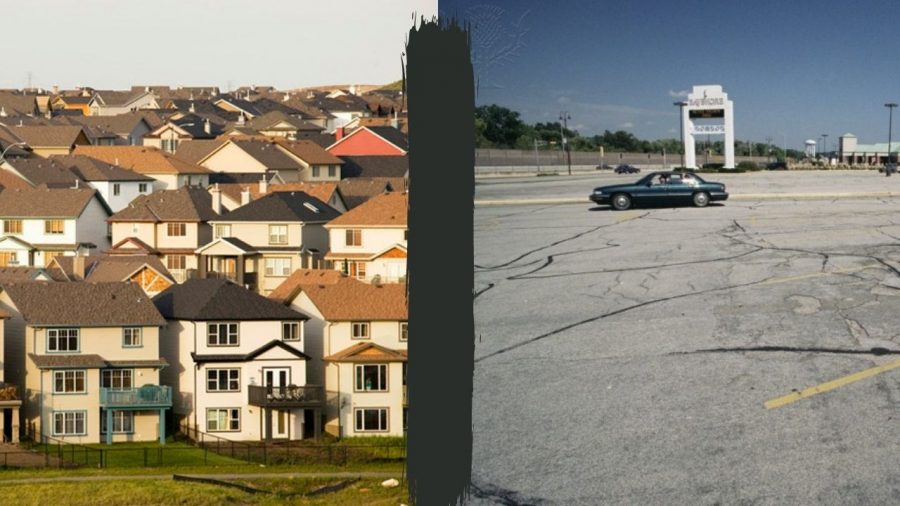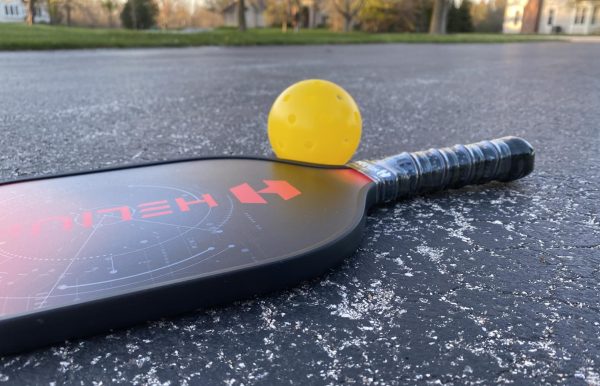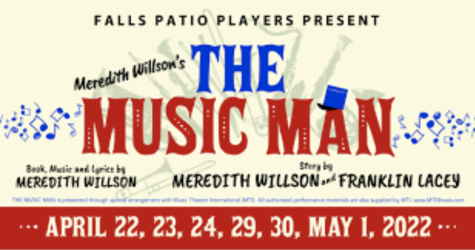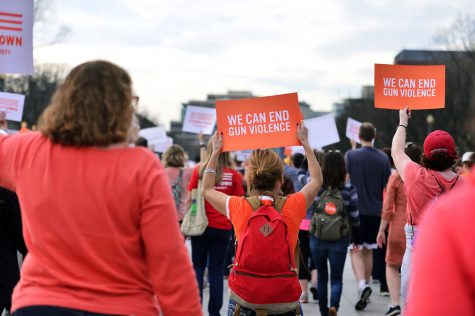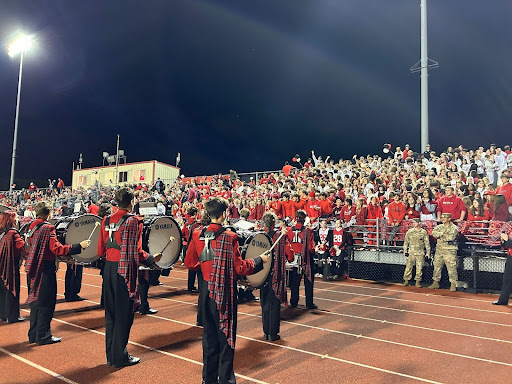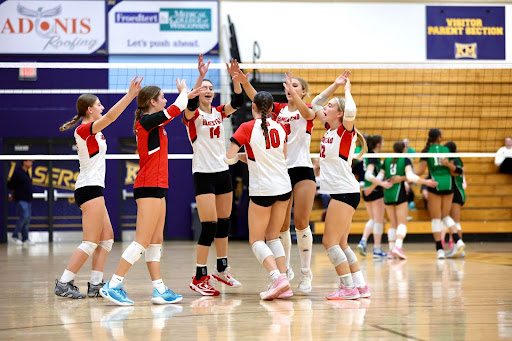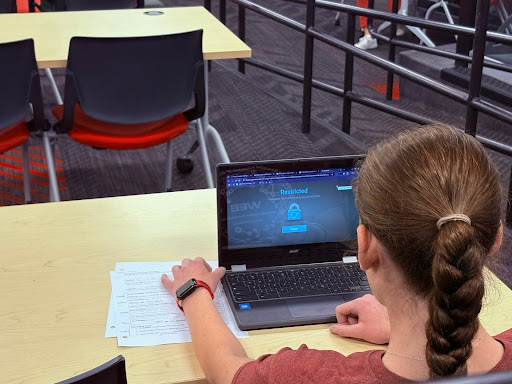Mequon versus Milwaukee: The disparities in gun violence between suburbs and cities
The gap in interpersonal gun violence between suburban and urban areas continues to increase.
In 2020, over 40,000 Americans lost their lives to gun violence with nearly 20,000 of those being homicide related, according to the Gun Violence Archive. This was the highest number of gun violence deaths the United States has seen in over two decades.
While many people believe that COVID-19 decreased mass shootings, the number of shootings that happened in homes or in the streets skyrocketed during the past year. In Milwaukee alone, the number of homicides doubled from 60 in 2019 to 187 in 2020 according to the Milwaukee Homicide Review Commission.
Milwaukee police officer Ron Edwards has worked with the Milwaukee Police Department for 17 years, with 13 of those years being a patrol officer. Over his years of service, Edwards has seen the trends of gun violence fluctuate.
“Typically gun violence has its spikes at certain times of the year and also [spikes] in years,” Edwards said, “It does not have a system where it keeps getting worse and worse, it can spike and then it lowers and then it spikes and lowers again.”
These spikes can be seen over the past ten years of firearm-related homicides in Milwaukee. In 2010 there was a steady decrease in gun violence homicides until 2015 when homicides rose from 76 in 2014 to 119 in 2015. Once again following the trends, there was a drop in deaths until 2020; 2020 was the deadliest year of gun violence in the past decade in Milwaukee.
Officer Edwards offered a reason for this spike saying that in 2020 due to “not being able to get out and about, a lot of [gun violence] happened with people who knew each other.” These instances of interpersonal violence can explain the decrease in mass shootings but the increase of overall homicides by firearms.
Of the 187 gun deaths in 2020, the Milwaukee Homicide Review Commission reports that 27 of those were children under the age of 17. Alongside those homicides, Children’s Hospital of Wisconsin treated 79 victims of gunshot wounds in 2020, another significant jump from 38 victims in 2019.
When looking at data provided by the Journal Sentinel Milwaukee Homicide Database, 2021 is proving to be another dangerous year for children and young adults. Of the 58 homicides in Milwaukee this year so far, 91% of those are shootings and 52% of deaths are between the ages of 18-29. Children between 10-17 years old are the third most affected group, with 14% of homicides being in that age group.
Not only is interpersonal gun violence affecting young people, but it is also disproportionately impacting urban communities.
These disparities are especially highlighted when compared to our local community in Mequon. While over the past ten years Milwaukee has seen 1,025 deaths due to gun homicide, Mequon has seen two.
This is not to say that suburban communities do not face the effects of gun violence; suicide by gun is the number two killer of middle-aged white men in America and half of the United State’s gun violence deaths are suicides. However, what the suburbs usually do not experience, is homicidal gun violence.
At the Wisconsin Anti Violence Effort (WAVE), Deja Garner, Director of Equity and Outreach at WAVE, works with all communities in Wisconsin to decrease the impact of gun violence. “There is a cycle of violence and one violent act creates a plethora of ripple effects including additional violence. That is a common thread in geographically urban areas. In suburban areas, interpersonal violence is not a norm for everyone so that cycle of violence is interrupted,” Garner said.
This cycle of violence that Garner discussed stems from a myriad of problems specifically related to a high population density in conjunction with a lack of resources in cities. “These areas that are really heavily populated are also seriously under-resourced,” Garner said, “There is inadequate transportation to high paying opportunities that are outside the city, there are disparities in education, disparities in health, and disparities in infrastructure.”
Not only are cities already deficient in these assets, but wealth is being driven out of the city rather than invested back into it. “There are many [businesses] that are placed in Milwaukee but the money and the finances go to places outside of Milwaukee,” Garner said. Big corporations such as retail stores, fast food restaurants, and real estate set up shops in the city but Milwaukee does not reap the benefits.
These discrepancies go way back to the time of redlining and gentrification. With Franklin Delano Roosevelt’s (FDR) “New Deal” during the great depression came two significant housing acts that would shape the cities of America for decades to come. Redlining, which was legal in the 1930s, allowed the then Home Owners Loan Corporation (HOWL), now known as the Federal Housing Administration (FDA), to deny mortgages to people depending on race or other discriminatory factors, which ultimately inhibited them from purchasing houses in certain neighborhoods outside of the city.
Almost 100 years later, a majority of U.S cities are still facing the repercussions of these acts.
The underfunding of these communities contributes to the rise in gun violence as people turn to dangerous ways of getting by. “If you put 100 hungry people in a room with one sandwich, and you tell everyone to try to get that sandwich, think about all the things that will happen as people are trying to get that sandwich, think about some of the things that might prohibit someone from getting that sandwich,” Garner said.
“When you go to the next room and you have 100 hungry people and 100 sandwiches and not only do you have the sandwiches but people are bringing them the sandwiches rather than them trying to get them,” Garner explained. Garner used this analogy to depict the difference in opportunities in suburban versus urban areas and why a lack of resources leads to an increase in crime and violence.
Ayanna Bennett, sophomore, has witnessed these inconsistencies firsthand after living in Milwaukee for seven years and then moving to Grafton. “When I first moved to [Milwaukee] it was really hard to get used to,” Bennett said, “but after living there you become immune to the gunshots or the action.”
Bennett explained the importance of the Wisconsin School Integration Chapter 220 Aid as a means of providing children from the city with an opportunity to receive education and experience in the suburbs. “I believe that how people are treated at [Homestead] sets the clock on their life when they go back to their [urban] environment. Not every student gets the opportunity to come to school at [Homestead] like we do and they go to school and stay in that environment,” Bennett said.
With the recent passing of classmate Jacob Howard due to gun violence, Bennett emphasized the need for starting conversations among kids from different geographical areas. “I am trying to get kids to understand that for all those kids who live in the inner city they are going exactly back to the environment that [Howard] fell victim to,” Bennet said. Initiating these conversations is just the beginning of bridging the gap of inequities between cities and suburbs.
Through working with administrators, Bennett is hoping to start a movement that aids students with opportunities for success. “I want to work with the closing the achievement gap consortium and the National African-American Youth Initiative (NAAYI) to make sure that we are ushering students into those programs,” Bennett said. Ultimately, Bennett hopes that by encouraging these curriculums students will be able to influence others in their communities as well.
By starting small with initiatives such as Bennett’s, or larger, statewide organizations such as WAVE, community members are working to bring change and awareness to places disproportionately affected by gun violence. However, for true developments to take place, the importance of different communities working together is needed now more than ever.

Hannah Kennedy is a senior at Homestead and serves as editor in chief of Highlander Publications. She is going to study journalism in college at the University...


